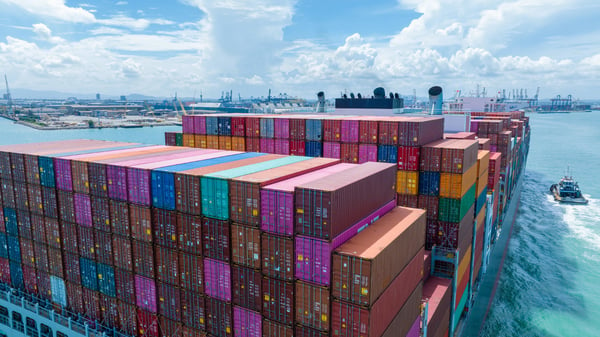CSRD is the new EU legislation on non-financial sustainability reporting, a revision of the NFRD Directive. But what does CSRD actually mean, which companies are covered and how to prepare for the new guidelines? Find out here!
This article was last updated on June 19, 2024
What does CSRD stand for?
CSRD (Corporate Sustainability Reporting Directive) is a new directive to ensure that companies report the impact of their social and environmental activities. The directive will apply to a wide range of companies (large, medium and small) operating in the EU market. Unlike the NFRD, the CSRD will affect more companies, and the requirements on what the sustainability report should contain are more clearly specified.
Why do we need CSRD?
CSRD is introduced as an evolution of the current framework for sustainability reporting of non-financial activities, NFRD. The background to the update is that previous requirements were considered too vague and unclear, which is why the European Commission has developed clearer and stricter legislation. The aim is to increase comparability and transparency and improve the quality of the information reported.
The aim of CSRD is to make it easier for companies to report the social and environmental impacts of their activities in a reliable way. CSRD also contributes to the EU Green Deal, a sustainable transition and links to the Paris Agreement.
3 important preparations for CSRD:
1. Identify what your key sustainability issues are
Start by understanding your context and the context in which you operate and with it your value chain. By identifying and assessing the impacts, risks and opportunities related to sustainability issues, you can analyze what is material to you. Once this is done, you can identify any gaps in your current sustainability reporting. What is missing for you to be able to comply with the new directive?
CSRD brings a lot of changes, some of the biggest changes are as follows:
- Clarifications on Double Materiality Analysis
- Reporting must be done in accordance with the European Sustainability Reporting Standards (ESRS)
- Requirements for third-party review
- The report should be part of the management report (not a separate report)
- The report must be presented in a digital format according to a common standard in an upcoming European database
Read more: Keep track of the key components of double materiality analysis
2. Bringing sustainability work together on a common platform
Our experience is that in order to make the strategic work successful and get sustainability issues incorporated into both the business strategy and the daily work, a good overview is needed, the ability to visualize how the strategy links to what is essential and to goals, metrics and measures.
By engaging, collaborating and being able to distribute responsibilities within the organization and of course to understand the strategy, the work can be streamlined.
Sustainability work can be streamlined by bringing together legal requirements, frameworks, strategy, information and data in an accessible workspace, in a digital tool. The entire organization can then quickly get an overview of what applies and where you stand in terms of compliance.
Read more: CSRD Sustainability management in Stratsys
3. Review your work with goals and KPIs
Make sure that sustainability reporting requirements become part of the overall governance of the organization. For example, how your organization manages environmental and social risks will have a major impact on goal achievement. Prepare for CSRD by defining the relevant KPIs and how you will go about collecting the information required by CSRD.
Which companies are covered by CSRD?
CSRD is expected to cover nearly 50 000 companies in total. The legislation is aimed at large companies, listed companies and medium and small companies. From July 1, 2024, CSRD will be introduced in Swedish legislation with some adjustment in when companies are covered.
Large listed companies with more than 500 employees must begin CSRD reporting in the first financial year starting after June 30 this year. Thus, large listed companies with a broken financial year starting after June will be the first to publish the first Swedish CSRD reports in the fall of 2025.
The next group to be covered are large companies and parent companies of groups that meet at least two of three criteria in the last two financial years:
- Net sales > 550 MSEK
- Balance sheet total > 280 MSEK
- Employees > 250
These companies will be affected by the CSRD on January 1, 2025, which means a first reporting under the CSRD in 2026.
The Directive will also cover SMEs that have securities listed on a regulated market, and that meet more than one of the following conditions in each of the last two financial years:
- Net sales > 10 MSEK
- Balance sheet total > 5MSEK
- Employees > 10
The requirements for small and medium-sized companies are expected to be slightly less strict than for large companies. SMEs that meet the thresholds above will be hit on January 1, 2026 with reporting in 2027 but there is a possibility for exemptions until 2028.
The last group, in what is now set out in the legislation, are non-EU companies that apply from January 1, 2028. For these, the following criteria apply:
- Net turnover within the EEA 1,7 MDSEK
And 1 of the following criteria: - Subsidiaries in the EU that meet reporting requirements
- Branch in EU has turnover of 450MSEK
All companies are encouraged to start preparing their reporting as soon as possible to facilitate the transition. Companies that delay reporting under CSRD risk becoming less attractive both for investors as comparability with other companies cannot be made and from a competitive point of view.
Here you can read more about how Stratsys' tools for sustainability management help organizations streamline their sustainability reporting and compliance with relevant frameworks.



